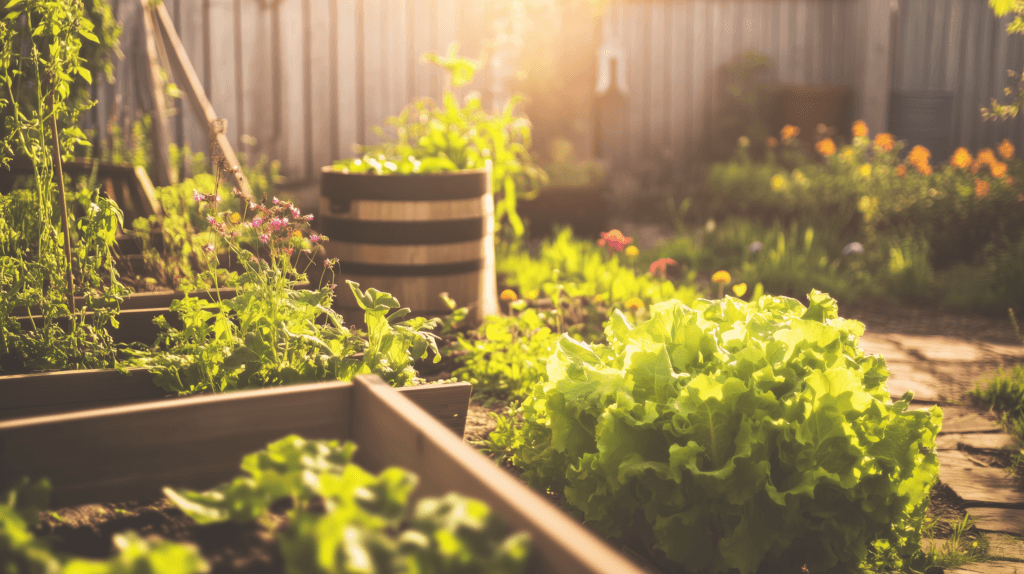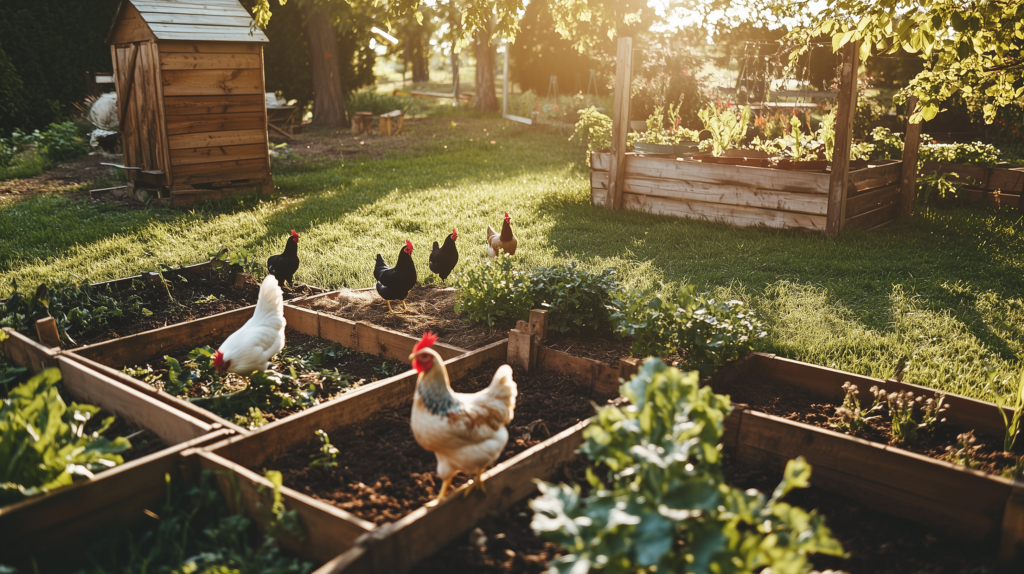This post may contain affiliate links, including those from Amazon Associates. If you make a purchase through these links, I may earn a commission at no additional cost to you. Learn more about our affiliate policy.
When I first started thinking about homesteading, the idea of creating a sustainable backyard felt a bit overwhelming. I didn’t have a lot of space, and I wasn’t sure where to begin.
But as I took small, simple steps like building a raised garden bed out of reclaimed wood, I quickly realized how empowering and rewarding it could be.
Backyard homesteading is about so much more than just growing your own food. It’s a way to reconnect with nature, reduce waste, and live in harmony with the seasons, all while creating a space that nourishes both you and the planet.
The best part? You don’t need acres of land or years of experience to get started.
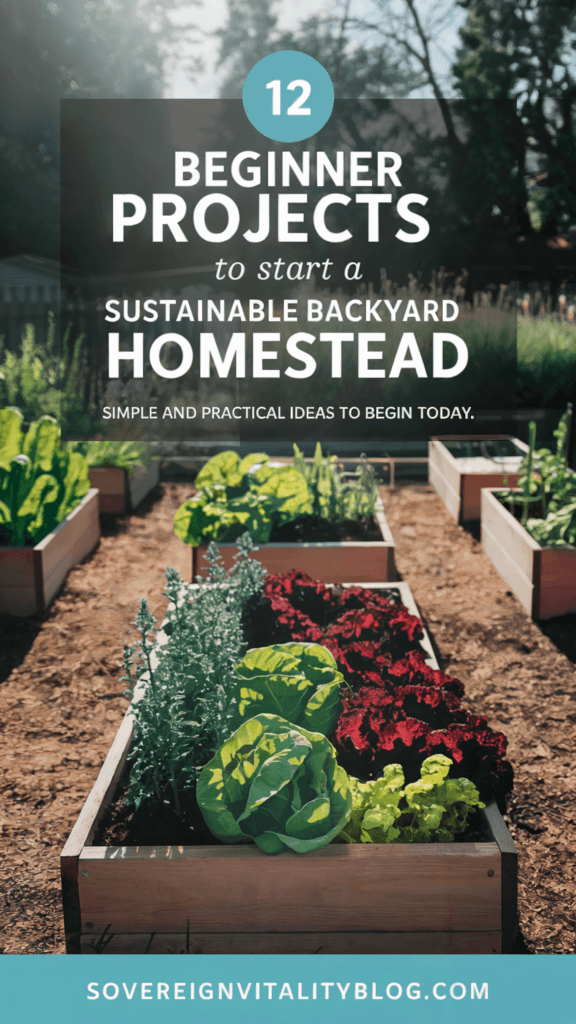
In this guide, I’ll walk you through 12 sustainable activities that are perfect for beginners. These simple steps will help you turn your backyard into a thriving homestead, one project at a time.
Why Start a Sustainable Backyard Homestead?
Environmental Benefits
- Reduces waste: Growing your own food, composting, and reusing materials help cut down on landfill waste and lower your carbon footprint.
- Conserves resources: Practices like rainwater collection and natural pest control save water and energy.
- Supports wildlife: Planting native flowers and creating bird-friendly spaces provides essential habitats for pollinators and other creatures.
Personal Benefits
- Healthier food: Homegrown produce is fresher, more nutritious, and free from harmful chemicals.
- Mindfulness and nature: Tending to a garden or observing seasonal changes fosters peace and a deeper connection to the natural world.
- Saves money: Growing food and repurposing household items reduce expenses over time.
Sustainable homesteading is such a fulfilling way to live intentionally, nurture the environment, and embrace simplicity.
I hope these 12 projects will inspire you to take the leap and turn your backyard into a sustainable sanctuary!
Start a Small Organic Vegetable Garden
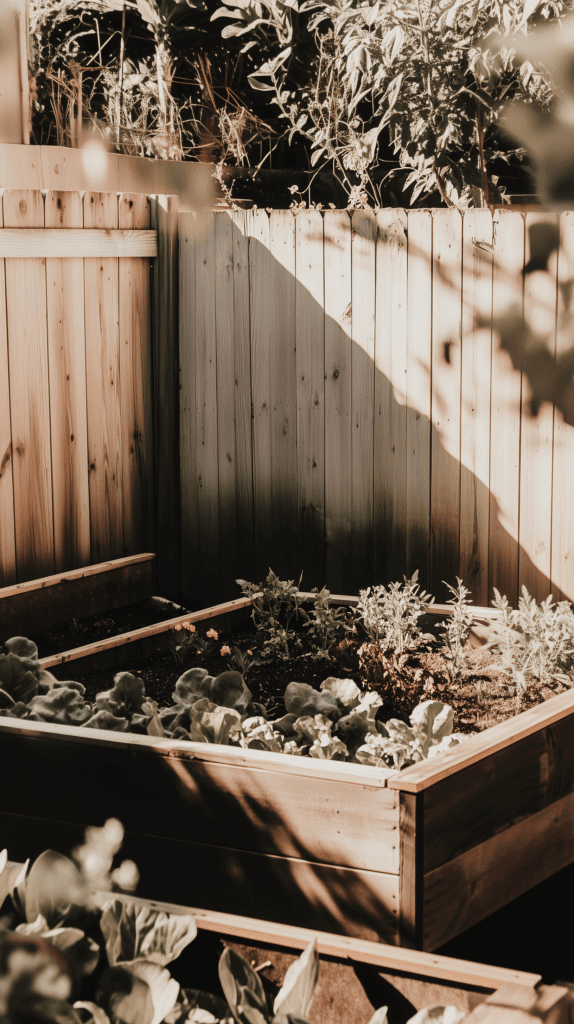
One of the most rewarding ways to begin backyard homesteading is by growing your own food. A small vegetable garden provides fresh, nutrient-dense produce while deepening your connection to the rhythms of nature.
Whether you have a spacious backyard or a small patio, you can create a thriving, organic garden that supports your health and reduces reliance on grocery store produce.
Start Small & Choose Beginner-Friendly Crops
If you’re just getting started, keep it simple. Certain vegetables grow easily with minimal maintenance, making them perfect for beginners.
- Leafy greens like lettuce, kale, and spinach grow quickly and can be harvested multiple times.
- Herbs such as basil, parsley, and chives thrive in small spaces and require little care.
- Root vegetables like radishes, carrots, and green onions are forgiving and adapt well to different soil conditions.
- Tomatoes and peppers are excellent for beginners, as they are high-yielding and easy to grow in containers.
Choose the Right Growing Method for Your Space
No matter the size of your backyard, there’s a way to grow fresh food:
- In-Ground Gardening: Ideal if you have healthy, well-draining soil and plenty of space.
- Raised Garden Beds: Great for small backyards or improving poor soil quality. Building your own from reclaimed wood makes this an affordable and sustainable option. Here are 7 ideas for diy raised garden beds to try.
- Container Gardening: The best option if you’re renting or have limited outdoor space. Use deep pots for root vegetables and hanging baskets for trailing plants like strawberries. Learn how to start container gardening as a renter here.
Raise Chickens for Fresh Eggs
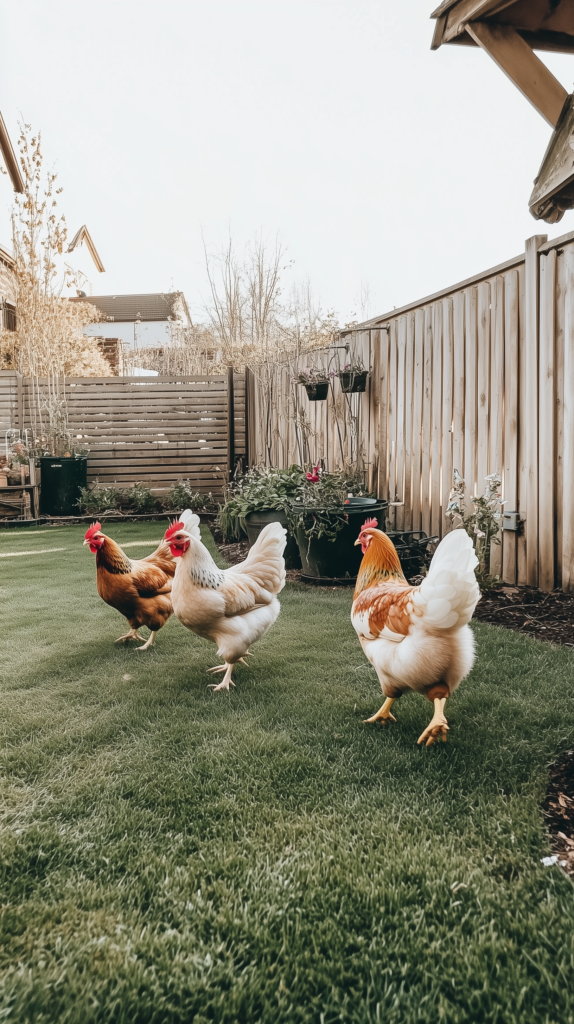
Adding chickens to your backyard homestead is a simple way to increase self-sufficiency while naturally improving your garden. Chickens provide fresh, nutrient-dense eggs, help control pests, and produce rich manure that enhances soil health.
If you’re new to raising chickens, start small with a few beginner-friendly breeds like Rhode Island Reds or Australorps, which are hardy and easy to care for. A secure, well-ventilated coop with nesting boxes, roosting bars, and predator protection is essential for their well-being.
Daily care is minimal – fresh water, quality feed, and a safe outdoor space to roam will keep your flock happy and productive. Over time, you’ll find that chickens not only provide food but also bring a natural rhythm to homesteading life.
Learn more beginner steps for getting started with backyard chickens.
Create a Vertical Garden to Maximize Space and Boost Productivity
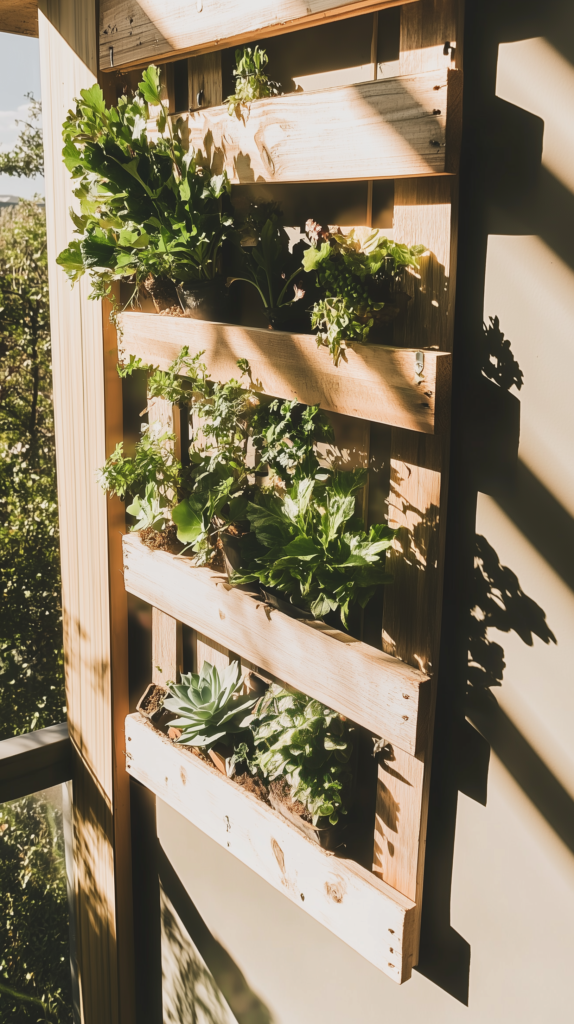
An outdoor vertical garden is one of the most space-efficient ways to grow food, herbs, and flowers, especially if you have a small backyard, patio, or balcony. By growing plants upward instead of outward, you can increase your harvest while using less ground space.
Vertical gardening also allows you to repurpose materials and create a low-cost, sustainable growing setup. Instead of buying expensive trellises or planters, you can:
- Upcycle old pallets, wooden crates, or hanging baskets to create a DIY vertical planting system.
- Use a simple trellis or garden netting for climbing vegetables like beans, cucumbers, and peas.
- Hang small pots or mason jars on a wall or fence to grow herbs like basil, thyme, and oregano.
Beyond saving space, vertical gardens promote better airflow, reducing the risk of plant diseases while making harvesting easier. Whether you’re growing fresh food or creating a lush green wall, this method is an excellent way to build a thriving, sustainable homestead, even in limited space.
Discover 12 DIY ideas for outdoor vertical gardens here.
Build Sustainable DIY Woodworking Projects
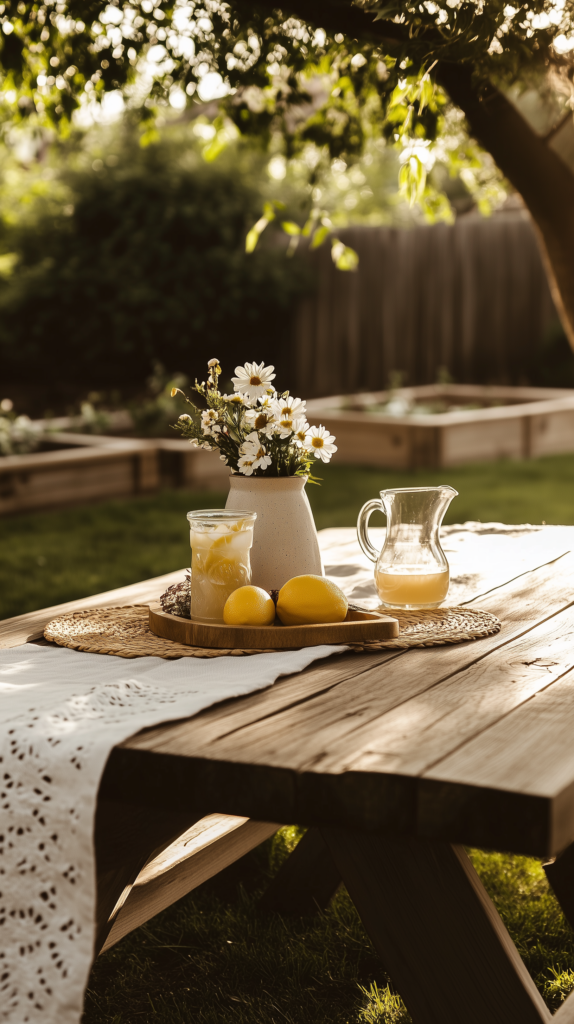
Woodworking is an essential homesteading skill that allows you to create durable, functional pieces for your backyard using reclaimed or sustainably sourced wood.
Whether you need raised garden beds, compost bins, or outdoor seating, building your own structures saves money, reduces waste, and ensures your projects are made to last.
Some beginner-friendly woodworking projects that align with a sustainable homestead include:
- Planters & Raised Garden Beds – Grow food in a self-sufficient way while repurposing materials.
- Potting Bench – Keep your gardening tools organized with a sturdy, handmade work surface.
- Picnic Table & Benches – Create an inviting outdoor gathering space for meals and relaxation.
- Workbench – Essential for any homesteader looking to tackle DIY projects and repairs.
Using reclaimed wood or FSC-certified sustainable lumber ensures your projects support both your homestead and the environment.
If you’re new to woodworking or just looking for inspiration, I’m offering a free guide that includes 50 detailed woodworking plans, perfect for projects like outdoor benches, tables, and other backyard essentials.
Start a Compost Bin to Reduce Food Waste
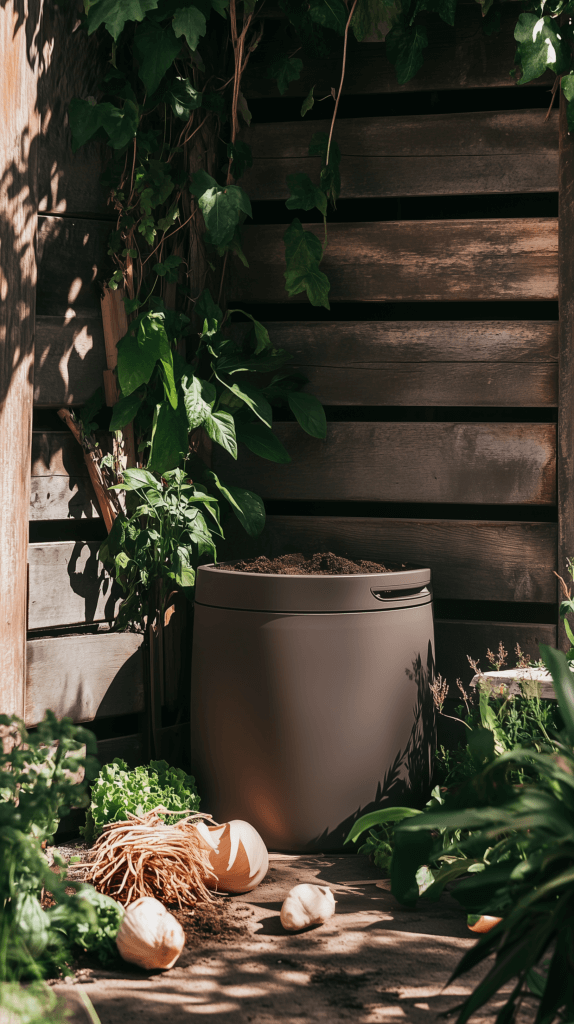
Composting is one of the most impactful ways to create a self-sustaining backyard homestead. Instead of tossing food scraps and yard waste into the trash, you can transform them into nutrient-rich soil that helps your garden thrive—all while reducing landfill waste and lowering your environmental footprint.
By starting a compost bin, you create a closed-loop system where organic matter naturally breaks down, returning valuable nutrients to the earth. This eliminates the need for chemical fertilizers and helps build healthier, more resilient soil for your plants.
How to Start Composting
- Choose Your Setup – Use a compost bin, a simple backyard pile, or a worm bin (great for small spaces).
- Balance Ingredients – Layer greens (fruit/veggie scraps, coffee grounds) with browns (dry leaves, cardboard, straw) for proper decomposition.
- Maintain & Turn Regularly – Keep the compost moist but not soggy and aerate it every few weeks to speed up breakdown.
- Use Finished Compost – In 2-6 months, you’ll have dark, rich soil to fertilize your garden naturally.
Install a Rainwater Collection System
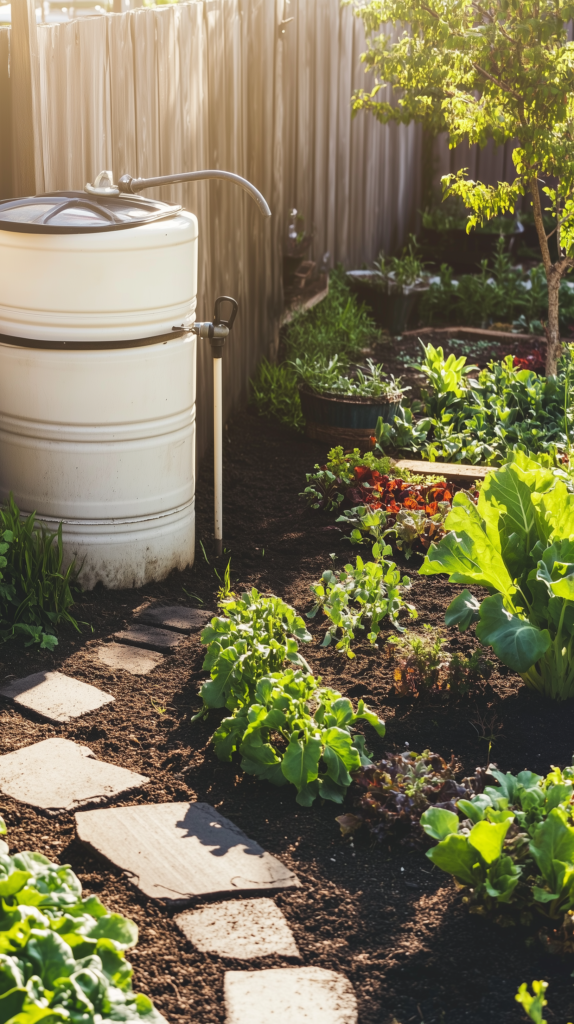
Harvesting rainwater is one of the simplest and most effective ways to conserve resources and create a more self-sufficient backyard homestead.
By collecting and storing rainwater, you reduce dependence on municipal water supplies, lower your utility costs, and ensure your garden has access to chemical-free, nutrient-rich water, especially during dry spells.
How to Get Started with Rainwater Collection
Setting up a basic rainwater harvesting system is easy and requires minimal investment:
- Choose a rain barrel – Look for food-grade barrels or repurpose a large container with a secure lid to prevent debris and mosquito breeding.
- Position it under a gutter downspout – Direct runoff from your roof into the barrel to maximize collection. If needed, install a diverter to control overflow.
- Filter out debris – A fine mesh screen over the barrel’s opening keeps out leaves, dirt, and insects.
- Use collected water wisely – Water your garden, clean outdoor tools, or rinse off muddy boots instead of using treated tap water.
Plant a Pollinator-Friendly Garden to Support a Thriving Ecosystem
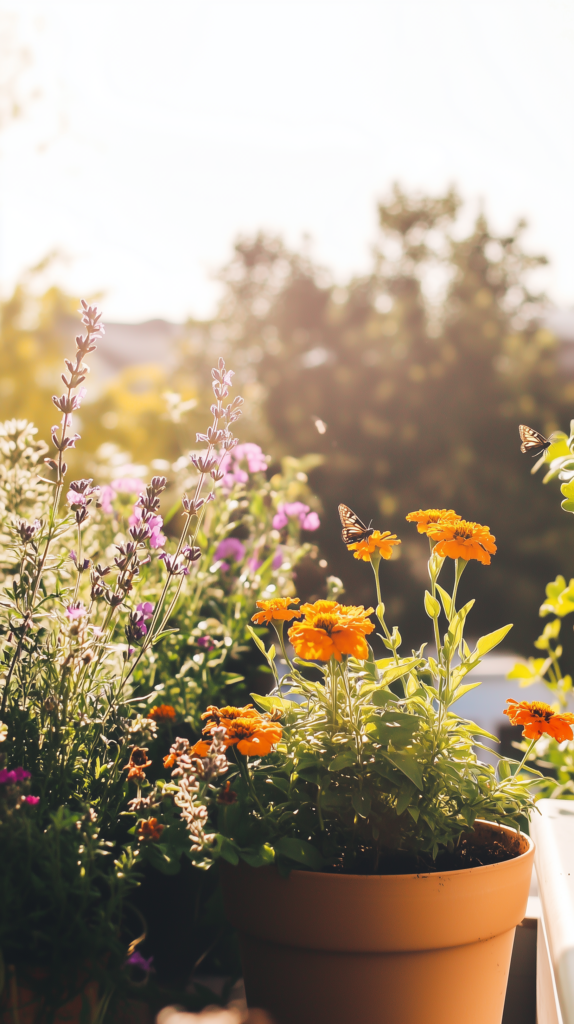
A pollinator-friendly garden is essential for a healthy, self-sustaining homestead. Bees, butterflies, hummingbirds, and other beneficial insects play a crucial role in pollinating fruits, vegetables, and flowers, ensuring abundant harvests and a balanced ecosystem.
How to Attract More Pollinators to Your Garden
- Choose Native Plants – Native wildflowers and perennials provide nectar and pollen suited to local pollinators. Some great options include milkweed (essential for monarch butterflies), coneflowers, black-eyed Susans, bee balm, and lavender.
- Plant in Clusters – Grouping several of the same plant species together creates a more efficient feeding area for pollinators.
- Provide a Variety of Blooms – Select plants that flower in different seasons to offer food sources from early spring through late fall.
- Avoid Pesticides & Herbicides – Even organic pesticides can harm bees and butterflies. Instead, use companion planting and natural pest control methods to maintain a healthy garden.
- Add Pollinator Habitats – Incorporate small water sources, bare soil patches for ground-nesting bees, and sheltered spaces like bee houses or log piles.
Set Up a Bird Habitat to Support Biodiversity and Natural Pest Control

Inviting birds into your homestead is a simple yet powerful way to enhance biodiversity, reduce garden pests naturally, and create a thriving ecosystem. Many bird species feed on insects like caterpillars, aphids, and beetles, helping to keep your plants healthy without the need for pesticides. Plus, the presence of birds adds natural beauty, movement, and a sense of harmony to your outdoor space.
How to Attract More Birds to Your Backyard
- Provide a Variety of Bird Feeders – Different birds prefer different types of food. Hang seed feeders, suet feeders, and nectar feeders in sheltered areas to attract a range of species.
- Add a Fresh Water Source – Birdbaths, small ponds, or shallow water dishes give birds a place to drink and bathe, especially during dry months.
- Create Safe Nesting Spots – Install nesting boxes for cavity-nesting birds like bluebirds and chickadees. Place them in quiet, shaded areas to keep them safe from predators.
- Grow Native Trees and Shrubs – Dense foliage provides natural shelter and nesting materials. Berry-producing shrubs like elderberry, serviceberry, and holly offer a valuable food source.
- Limit Chemical Use – Avoid pesticides, herbicides, and synthetic fertilizers, as they can harm birds directly or reduce their natural food supply.
Learn Food Preservation Techniques to Reduce Waste

Preserving your harvest is a key homesteading skill that ensures none of your hard-earned produce goes to waste. By learning a few simple preservation methods, you can store food for months, reduce reliance on store-bought options, and enjoy the flavors of your garden even in the off-season.
Start with the Easiest Method: Quick Pickling
If you’re new to food preservation, quick pickling vegetables is one of the fastest, most beginner-friendly ways to get started. Unlike traditional canning, quick pickling requires no special equipment and can be done in just a few minutes using simple ingredients like vinegar, salt, and spices. It’s an easy way to preserve cucumbers, carrots, onions, radishes, and even green beans while adding delicious flavor.
Here are more easy ways to preserve food without canning.
Dry Herbs for Culinary and Medicinal Use
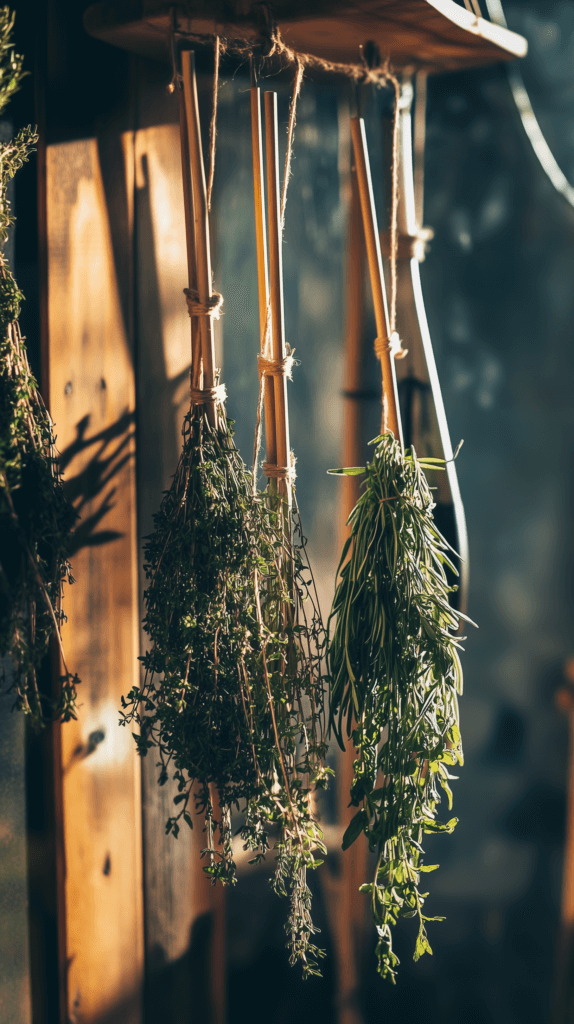
Drying herbs is one of the simplest and most rewarding preservation methods, allowing you to capture their peak flavor, aroma, and medicinal properties for year-round use.
Whether you’re drying herbs for cooking, homemade teas, or natural remedies, this method ensures you always have fresh, homegrown ingredients on hand. Plus, it’s a sustainable alternative to store-bought dried herbs, which often lose potency over time.
Here’s how to grow and dry herbs 5 easy ways.
Storage and Use
- Once fully dried, store herbs in airtight glass jars away from heat and sunlight.
- Crush dried leaves just before use to preserve their potency.
- Use dried herbs in seasoning blends, teas, tinctures, or homemade herbal remedies.
Switch to Organic Pest Control for a Healthier Garden
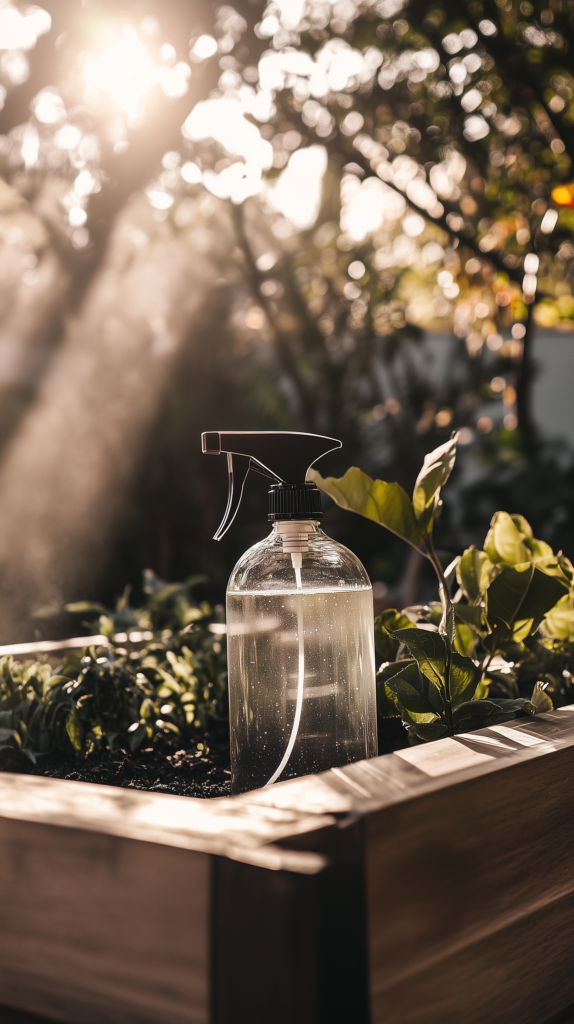
Protecting your garden from pests doesn’t have to mean using harsh chemicals. Organic pest control methods help keep your plants healthy while preserving soil quality, beneficial insects, and overall biodiversity. By working with nature instead of against it, you can naturally deter pests, improve plant resilience, and support a thriving homestead ecosystem.
Natural Ways to Keep Pests Out of Your Garden
- Companion Planting – Certain plants naturally repel pests while attracting pollinators. For example, marigolds deter aphids, basil repels mosquitoes, and nasturtiums keep cabbage worms away.
- Encourage Beneficial Insects – Ladybugs, lacewings, and praying mantises feed on garden pests like aphids and mites. Planting dill, fennel, and yarrow attracts these natural predators.
- Homemade Organic Sprays –
- Garlic & Pepper Spray repels soft-bodied insects like aphids.
- Neem Oil Spray disrupts pests’ reproductive cycles while being safe for bees.
- Soap & Water Spray suffocates pests like spider mites and whiteflies.
Incorporate Zero-Waste Gardening for a More Sustainable Homestead

Zero-waste gardening is all about reducing waste, repurposing materials, and making the most of natural resources – all while keeping your garden thriving. By using what you already have, you can cut down on costs, limit plastic use, and create a healthier, more self-sufficient growing space.
Simple Ways to Reduce Waste in Your Garden
- Repurpose Containers for Seed Starting & Storage – Instead of buying plastic trays, use glass jars, yogurt cups, egg cartons, or tin cans to start seeds. Wooden crates or repurposed baskets make excellent storage for garden tools.
- Use Natural Mulch to Conserve Water & Improve Soil Health – Grass clippings, shredded leaves, straw, and even spent coffee grounds help retain moisture, suppress weeds, and add nutrients back into the soil—all without needing synthetic fertilizers.
- Create a DIY Watering System – Repurpose old milk jugs, wine bottles, or buckets as slow-drip irrigation systems to keep plants hydrated while minimizing water waste.
- Compost Everything You Can – Kitchen scraps, plant trimmings, and even cardboard boxes can be turned into nutrient-rich compost, eliminating the need for synthetic fertilizers while reducing household waste.
Final Thoughts
Backyard homesteading is more than just a lifestyle change—it’s a meaningful way to reconnect with nature, reduce waste, and cultivate self-sufficiency. By starting with even one or two of these sustainable activities, you’re taking important steps toward a healthier, more intentional way of living. Whether you’re growing your first vegetable garden, setting up a compost bin, or creating a pollinator-friendly space, each action contributes to a more vibrant home and planet.

